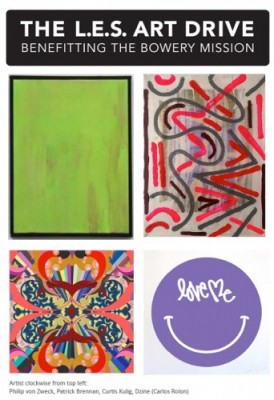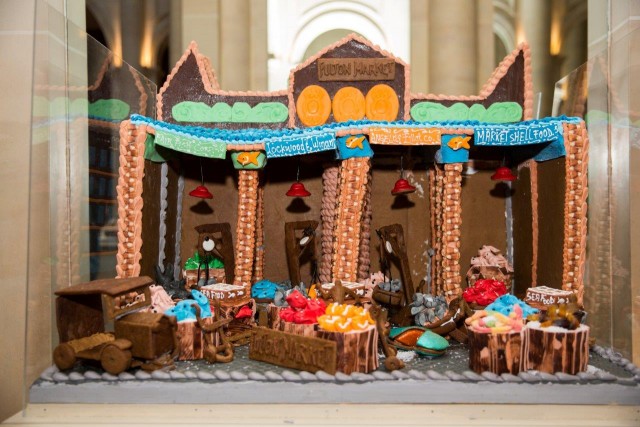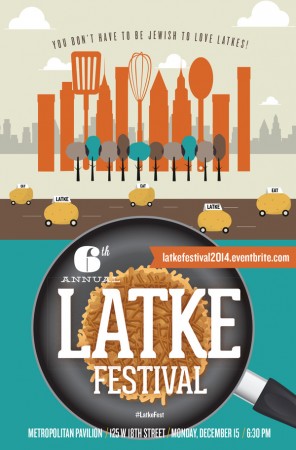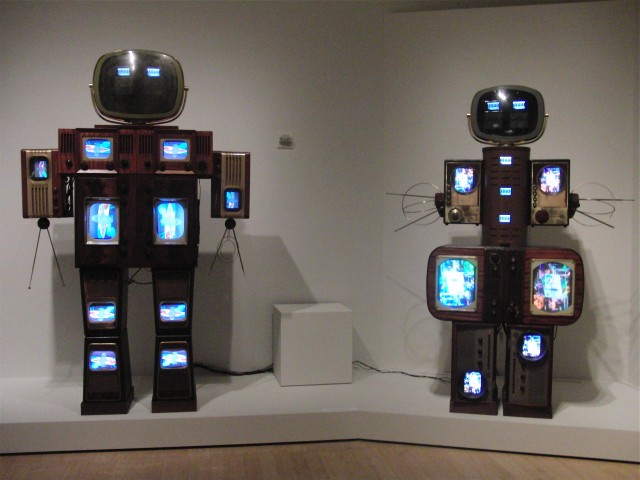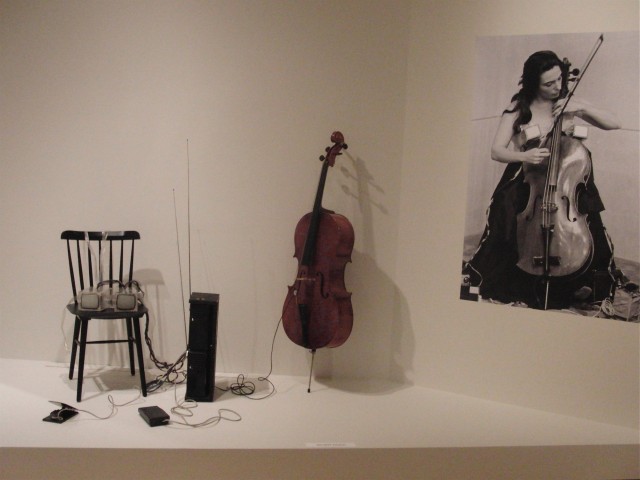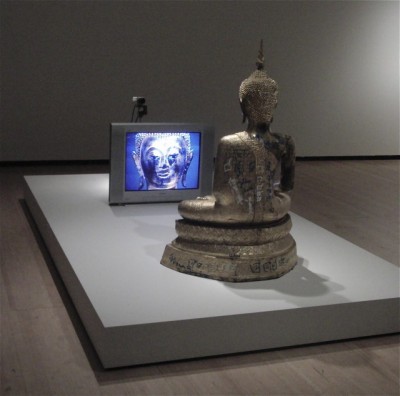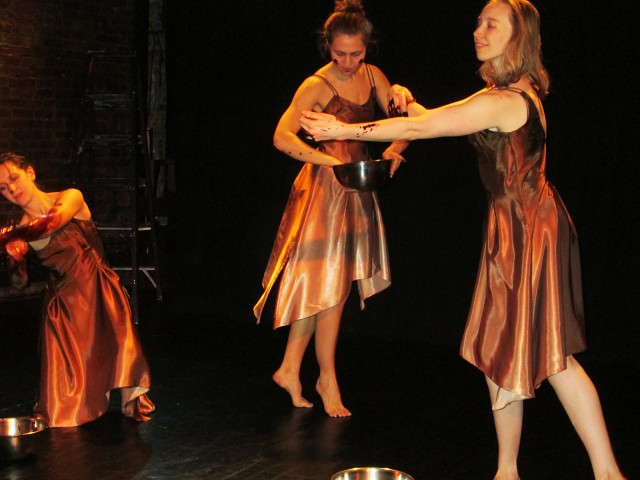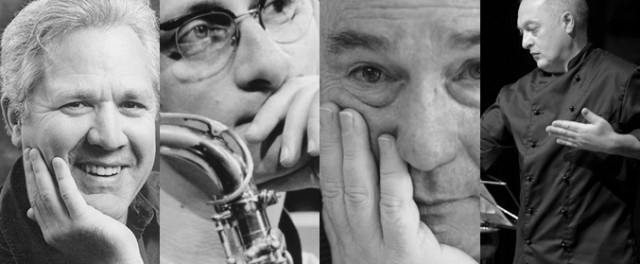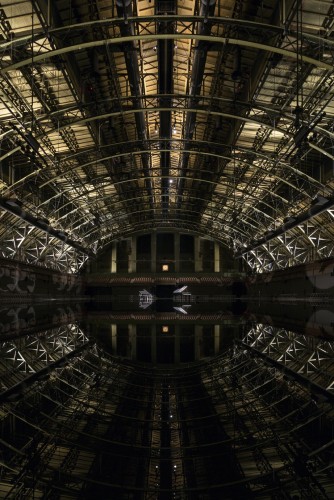
Performance installation transforms the Park Avenue Armory into a multisensory experience (photo by James Ewing)
Park Avenue Armory
643 Park Ave. at 67th St.
Installation: December 11 – January 4, $15, times vary
Performances: December 9-21, $90, 7:00 or 8:00
212-933-5812
www.armoryonpark.org
As you enter the cavernous Wade Thompson Drill Hall in the Park Avenue Armory to experience Douglas Gordon and Hélène Grimaud’s absolutely wonderful “tears become . . . streams become . . . ,” you encounter a long rectangular space in front of you, several inches below floor level, with two pianos standing on it and groups of chairs on all four sides. Slowly, water begins seeping into the central area. You take your seat and become mesmerized as water continues coming up through the seams of more than eight hundred dark panels of cement-bonded particle board and spreads across the thirty-three thousand square foot space, filling in ever-dampening circles in extremely satisfying individual narratives. Then the French-born, Switzerland-based Grimaud, seated at the larger of the Steinway grands, begins playing water-inspired works by Debussy, Ravel, Liszt, and others as the lighting turns the floor into a breathtaking reflecting pool, the arched ceiling echoed below in such a way that you feel like you can fall right into its spacious depths, as if the pool below is as vast and open as the space above. The large semicircular vaults of the west entrance and the east wall become complete circles with the reflection, the whole entity resembling a kind of submarine; meanwhile, little gurgles of water occasionally pop up on the surface, making quick sounds and small ripples. In addition, occasional currents create shimmers that add an enticingly surreal quality to the proceedings. At the press preview on December 8, the Turner Prize–winning Gordon sat on the piano bench next to Grimaud, occasionally standing up and determinedly waving his hands and arms, signaling the lighting personnel as if conducting an orchestra. One of the most accomplished classical pianists in the world, Grimaud has synesthesia, a sensory condition that causes her to visualize music as colors, which is ironic given the piece’s decidedly monochromatic appearance; also ironic is that Gordon says he is not a very good swimmer — and in his 2012 installation “The End of Civilisation,” he burned a piano onscreen. (Gordon and Grimaud each has a thing for wolves as well.) Doused in magic and mystery, “tears become . . . streams become . . . ” is yet another major triumph for the armory, which has been presenting many of the city’s most dazzling and innovative performance installations since opening as an arts institution in 2007.
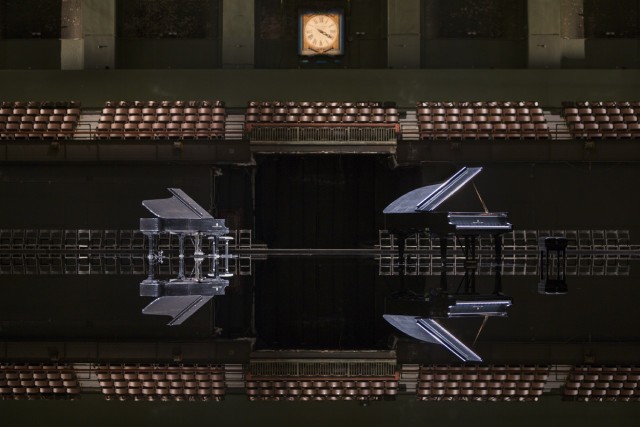
Lights and music lead to reflective moments in “tears become . . . streams become . . . ” (photo by James Ewing)
Grimaud will be performing a one-hour program live December 9-21 ($90); there will be an Artist Talk on December 10 ($15) with Gordon and Grimaud, moderated by armory artistic director Alex Poots, who brought the two together for this very special commission, and Family Day takes place Sunday, December 13, from 10:00 am to 12 noon, specifically for families with children ages six to twelve. The must-see “tears become . . . streams become . . . ” — a title Gordon came up with from a memory of having seen a young boy playing the piano with one hand while wiping away tears with the other — will be open afternoons and some evenings December 11 through January 4 ($15, stay as long as you want), during which times a computerized piano will play Grimaud’s music, but the lighting, which is so integral to the piece, will not change. “A field is endless — it goes on, and on, and on, and on,” Gordon states about the project. “And as the water collects, the space it inhabits will never be the same again.” Indeed, after immersing yourself in “tears become . . . streams become . . . ,” you will never see the armory — or hear Debussy, Ravel, and Liszt — quite the same way again.
